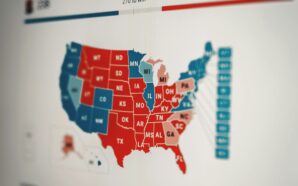Each year the Postal service comes a little closer to bankruptcy as most consumers move away from traditional mail in favor of new technologies. With increased levels of competition from competitors UPS and Fedex, post offices around the country are beginning to become more and more unprofitable and the government based company is running out of money fast. The US Postal Service faces a number of challenges that its competitors do not because it is a publicly owned company. Since it is owned by the government, and ruled over by lawmakers who reference the U.S. Constitution there are plenty of options that the Postal Service simply isn’t able to use. Since it is limited in so many different ways there really is no out for the Postal Service other than total Bankruptcy, or Congress addressing the situation.
Out of Money
The Postal Service is completely out of money. They have been running on government funds to keep them going and they aren’t allowed to shut down unprofitable branches make themselves more profitable. Worst of all they simply aren’t allowed to borrow any more money from the Treasury because they have hit the $15 billion dollar cap. That’s right, the U.S. Postal Service is $15 billion dollars in debt.
The Solutions
There are two different ways that Congress can help alleviate the problems that the Postal Service is facing. The first problem that they have is it costs too much money to deliver mail to everyone in America six days a week all year long. They want to limit the mail that they deliver to five days a week for both business and residential services. They don’t see the point in delivering mail to businesses on Saturday because most simply are not running and the mail simply sits there for the rest of the weekend. It also doesn’t make much sense to deliver mail to residential homes on Tuesday because most of that mail is simply advertisements and nothing else. The other possible solution to the problem is to stop putting $5.5 billion into the fund for future retiree’s of the Postal Service. The fund is to provide for health care needs of everyone retiring from the service, and it is responsible for nearly all of the losses that the company has incurred.
Controlled Pricing Options
The Postal Service could also raise prices on what it charges American’s to ship their mail, but it is only allowed to raise prices on the packages that it delivers because it has a monopoly on delivering envelopes in the country. That means that they have to keep stamp prices steady until there is an increase in inflation and they are only allowed to adjust for inflation and that’s it.
Downsizing Options
The Postal Service has been looking at downsizing the number of branches that they have opened and they want to cut out a large number of locations that have smaller populations in the area. By cutting out these branches they could instantly become much more profitable. The only problem is many legislatures are fighting against that effort because they are from districts in the areas where post offices are going to be removed. The Postal Service also has to fight with Unions because they signed an agreement with one of the largest Unions that they work with saying that they would retain employees even if they did decide to downsize the number of offices. In order to close down some of the branches that weren’t doing so good they offered around 114,000 workers $15,000 each to get them to retire earlier since that was the only way to downsize. The U.S. Postal Service is doing everything that it can to remain in business but they keep running out of options and unless something changes in what they are allowed to do they won’t have any choice but to close their doors. If that happens the country will be left with Fedex and UPS to rely on for their mail needs and it will be a very different environment altogether.
New Developments in the Fight against Breast Cancer
-
An appeals court in Texas has delivered a significant victory to attorney Sidney Powell, upholding a state court judge’s...
-
President Joe Biden’s reelection strategy takes a surprising turn as the Rust Belt, not the Sun Belt, emerges as...
-
In a significant legal development, U.S. District Judge Aileen Cannon has declined former President Donald Trump’s request to dismiss...
-
Major Collision Causing the Collapse of the Bridge The recent collapse of the Francis Scott Key Bridge in Baltimore,...
-
Donald Trump is on the brink of a crucial deadline in a business fraud case, with just a few...
-
Sylvia Gonzalez, a newly elected city council member in a small Texas community, was embroiled in controversy when she...
-
Is TikTok Getting Banned in the States? The United States House of Representatives has voted with bipartisan support to...
-
The 2024 Election Race Continues Between Joe Biden and Donald Trump With the 2024 general election drawing closer, President...
-
Another Successful Moon Landing Intuitive Machines, a commercial space company, has achieved a remarkable feat by landing its Odysseus...
-
Has the State of USA Improved Since Trump’s Presidency or Gotten Worse? Given the current climate of the United...
-
In a surprise speech delivered from the White House, President Joe Biden addressed the recent special counsel’s report and...
-
Is Texas Taking the Right Step Towards a Better America? The Austin Guaranteed Income Pilot, Texas’s pioneering tax-payer-funded basic...



















